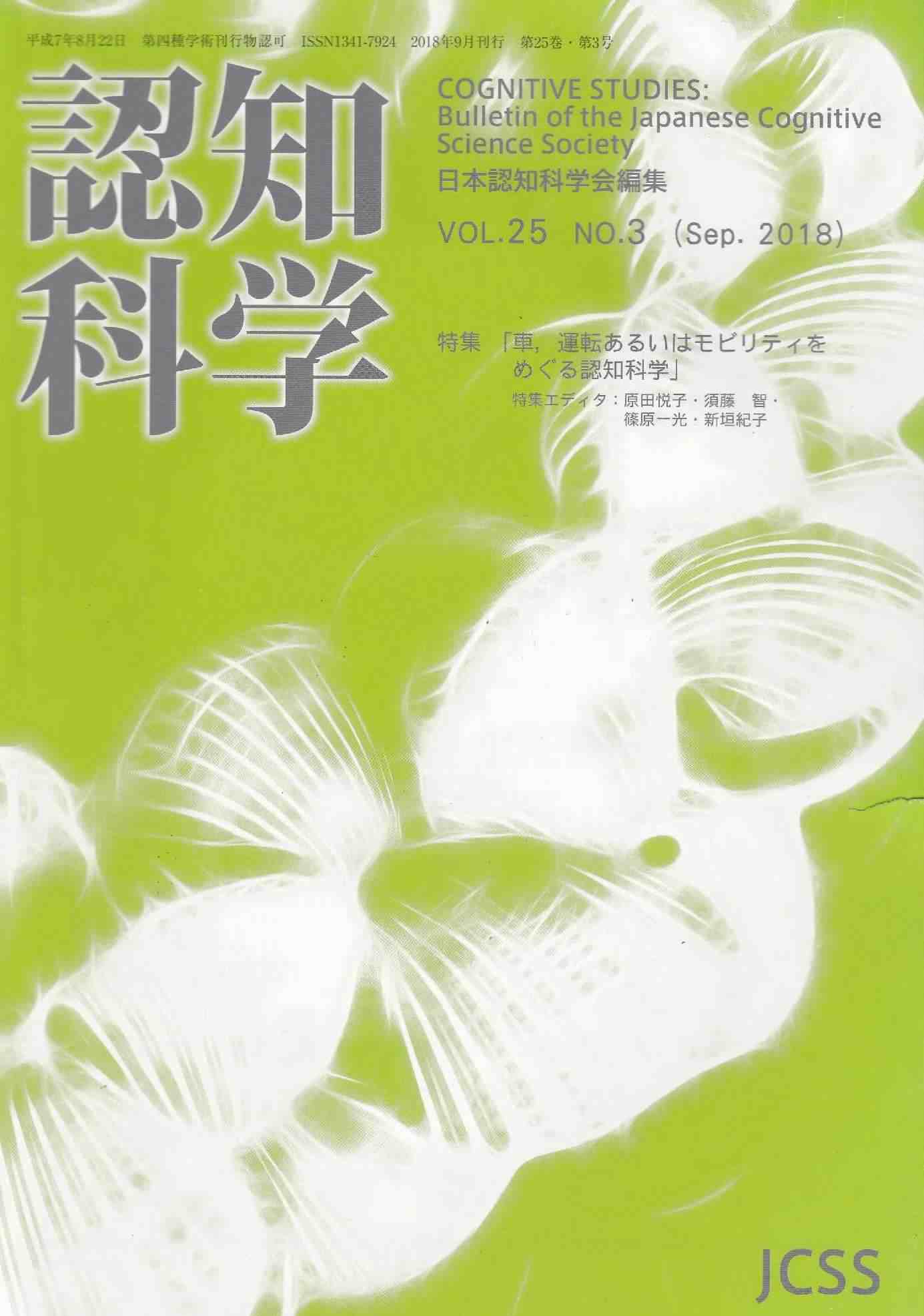25 巻, 3 号
認知科学
選択された号の論文の14件中1~14を表示しています
- |<
- <
- 1
- >
- >|
巻頭言
-
原稿種別: 巻頭言
2018 年25 巻3 号 p. 225-226
発行日: 2018/09/01
公開日: 2019/02/28
PDF形式でダウンロード (539K)
フェロー紹介
-
原稿種別: フェロー紹介
2018 年25 巻3 号 p. 227-231
発行日: 2018/09/01
公開日: 2019/02/28
PDF形式でダウンロード (768K) -
原稿種別: フェロー紹介
2018 年25 巻3 号 p. 232-237
発行日: 2018/09/01
公開日: 2019/02/28
PDF形式でダウンロード (913K)
特集―車,運転あるいはモビリティをめぐる認知科学
-
原稿種別: その他
2018 年25 巻3 号 p. 238-242
発行日: 2018/09/01
公開日: 2019/02/28
PDF形式でダウンロード (811K) -
原稿種別: 展望論文
2018 年25 巻3 号 p. 243-258
発行日: 2018/09/01
公開日: 2019/02/28
PDF形式でダウンロード (1511K) -
原稿種別: 展望論文
2018 年25 巻3 号 p. 259-278
発行日: 2018/09/01
公開日: 2019/02/28
PDF形式でダウンロード (1169K) -
原稿種別: 研究論文
2018 年25 巻3 号 p. 279-292
発行日: 2018/09/01
公開日: 2019/02/28
PDF形式でダウンロード (1610K) -
原稿種別: 研究論文
2018 年25 巻3 号 p. 293-309
発行日: 2018/09/01
公開日: 2019/02/28
PDF形式でダウンロード (2211K) -
原稿種別: 研究論文
2018 年25 巻3 号 p. 310-323
発行日: 2018/12/01
公開日: 2019/02/28
PDF形式でダウンロード (1640K) -
原稿種別: 研究論文
2018 年25 巻3 号 p. 324-337
発行日: 2018/12/01
公開日: 2019/02/28
PDF形式でダウンロード (1418K) -
原稿種別: 研究論文
2018 年25 巻3 号 p. 338-349
発行日: 2018/09/01
公開日: 2019/02/28
PDF形式でダウンロード (818K)
文献紹介
-
原稿種別: 文献紹介
2018 年25 巻3 号 p. 351-357
発行日: 2018/09/01
公開日: 2019/02/28
PDF形式でダウンロード (696K)
書評
-
原稿種別: 書評
2018 年25 巻3 号 p. 358-359
発行日: 2018/09/01
公開日: 2019/02/28
PDF形式でダウンロード (533K)
博士論文紹介コーナー
-
原稿種別: Dissertation
2018 年25 巻3 号 p. 360
発行日: 2018/09/01
公開日: 2019/02/28
PDF形式でダウンロード (522K)
- |<
- <
- 1
- >
- >|
